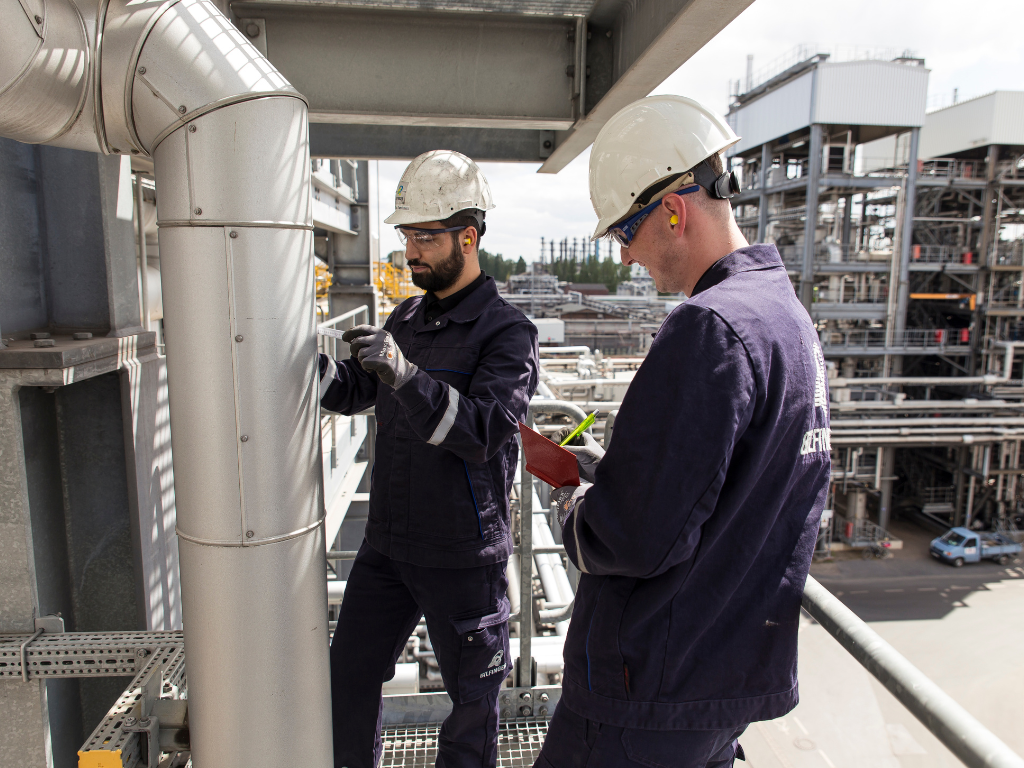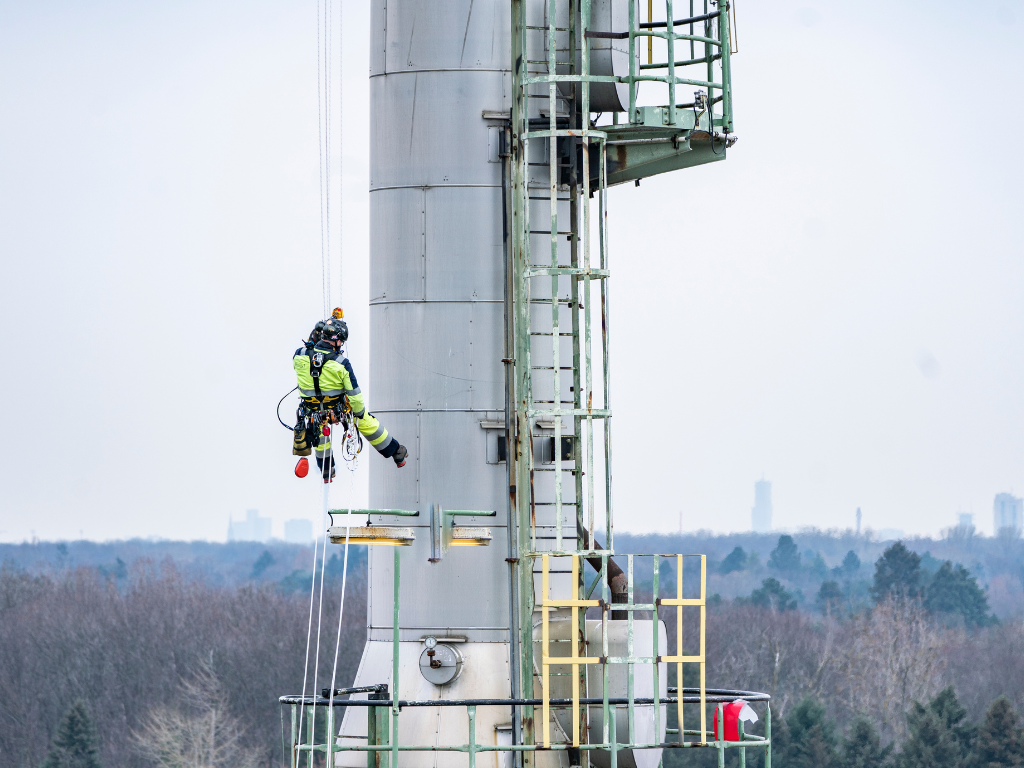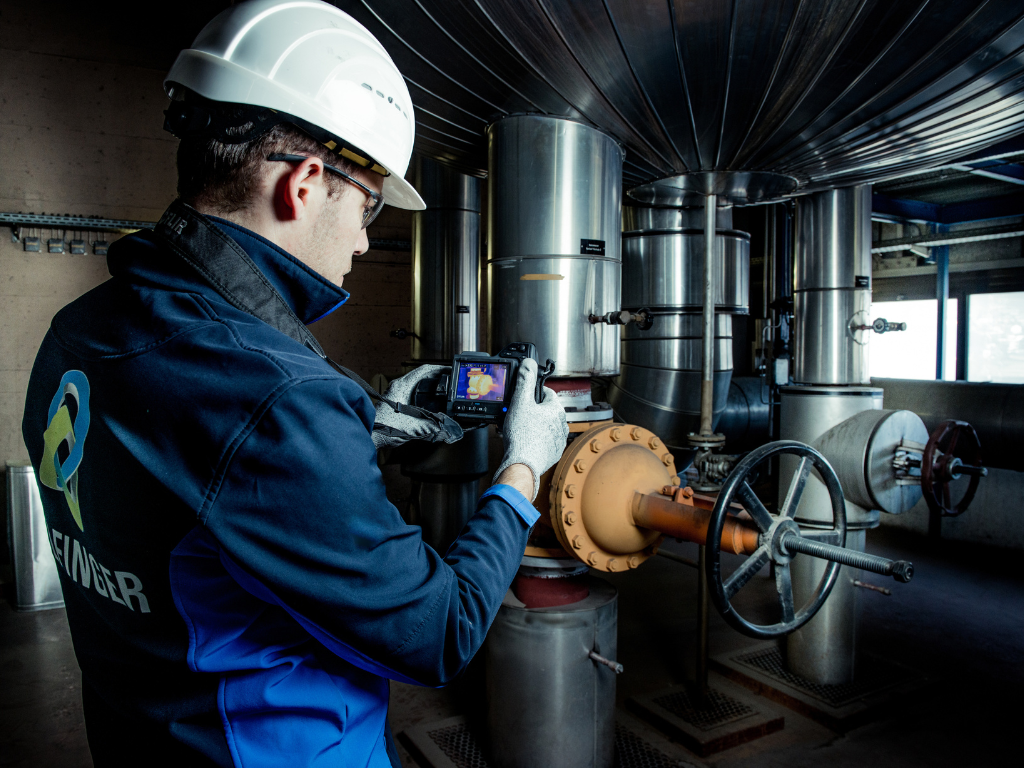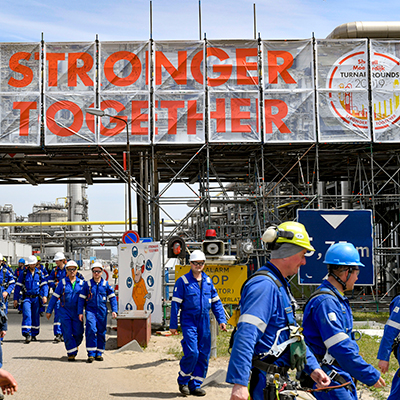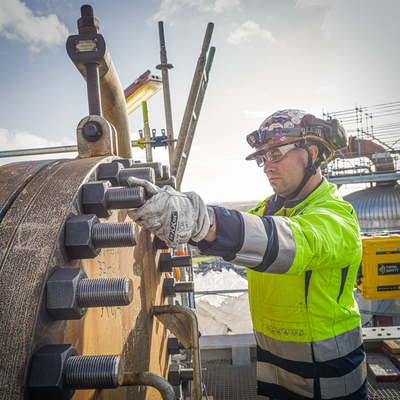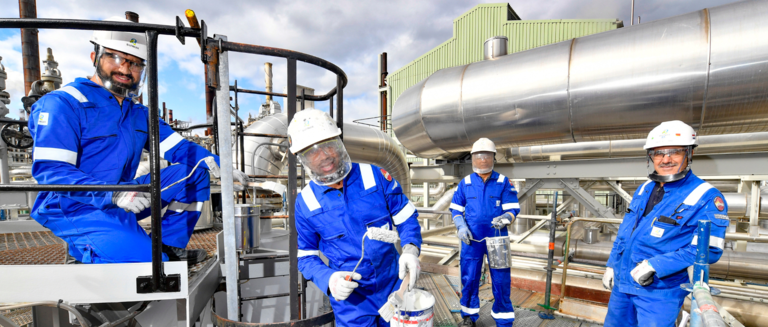
Total solution:
Insulation, Scaffolding and
Corrosion Protection (ISP)
Bilfinger solutions for access-to-height, insulation, preservation and related services help leaders in the process industry maximize productivity and minimize downtime. Our multidisciplinary approach ensures safe and efficient services, enabling you to focus your assets and people on core responsibilities.
Scaffolding, rope access or another solution
Our decades of experience mean you get the best solution tailored to your project and work environment. We optimize safety by reducing risk hours at height while matching the solution—whether scaffolding, rope access, cherry pickers or other means—to safe and efficient access.
Bilfinger is the most progressive service provider in the scaffolding construction industry. Our process, product and safety innovations have accelerated professionalism in scaffolding construction, furthering the industry’s ability to deliver safe and affordable services.
Our scaffolding innovations include:
- The scaffolding app
- Magnetic anchors
- 3D scanning
- Client portal
Our vast experience using ropes, climbing techniques and safety equipment on difficult-to-access work sites is helping customers accomplish more, safely. Whether at height or in depth, such as work sites above water, in confined spaces or within buildings, industrial climbing practiced by Bilfinger is safe, efficient and flexible.
Rope access is used when other working methods are unsafe, not possible or have a negative impact on the environment. Think, for example, of sloping roofs that can’t be reached with aerial work platforms or of work sites above water that can’t be reached with scaffolding.
Increasingly, customers who previously viewed industrial climbing as too dangerous now see it as an access option that actually increases safety by significantly reducing the number of hours at risk.
We implement this service in various markets, including:
- Chemicals & Petrochemicals
- Maritime
- Offshore
- Civil & Infrastructure
For short-term medium-height projects, cherry pickers are often the best alternative to scaffolding or rope access. Alternative solutions are always considered in determining the safest and most cost-efficient ways to reach your asset.
Insulation - the key to energy-efficient operations
Industrial insulation significantly contributes to the integrity of pipes, assets and installations. Insulating your assets can also support your energy efficiency goals. Bad-quality insulation can cause heat loss or even integrity loss due to Corrosion Under Insulation (CUI).
Our IsoScan / TIP-Check can identify and visualize areas where you can save energy. The IsoScan uses a thermographic camera to visualize what the naked eye cannot see. By identifying places on an object or installation where heat loss occurs, you get a good picture of the quality of the thermal insulation and whether it needs replacement. The scan reveals both potential savings and the associated investment costs. By also paying attention to CUI during the scan, maintenance costs can be significantly reduced over time. At the same time, process safety is improved substantially.
We apply cold insulation, primarily in temperatures up to 20° C, to prevent surface condensation and ice formation. Materials commonly applied include foamglass, PIR/PUR or elastomers, with an aluminum/steel/terostat finish.
Bilfinger has years of experience applying thermal insulation to prevent heat loss and fire hazards. In temperatures ranging from 20° C to 70° C, customers typically request thermal insulation to create safer working conditions. At higher temperatures, thermal insulation is applied to maintain optimal process conditions and ensure safety. At very high temperatures, above 600° C, when insulating with mineral wool, a layer of high-temperature insulation is often applied first.
Bilfinger specializes in insulating cold boxes. The insulation consists of perlite granules sprinkled between the piping. During maintenance, this insulation must be removed and reinserted, a job that Bilfinger has complete.
- Safety: High quality insulation prevents corrosion under insulation (CUI)
- Process safety: Good insulation ensures that equipment always maintains the required temperature
- Energy efficiency: The use of efficient insulation helps to reduce energy consumption and thus improve overall energy efficiency
Want more information about our energy-efficient insulation solutions?
Painting
Bilfinger is a reliable and experienced painting partner. Our expertise in the painting process and materials—including special coatings—helps you preserve steel and protect it from external influences that cause corrosion
Properly pretreating a steel surface before painting it is essential to preserving the material’s durability. One of the most thorough methods of pretreatment is blasting. Bilfinger experts can recommend and perform the best type of blasting for your installation, including:
- Conventional blasting (compressed air)
- Dust-free blasting
- Sponge blasting
- Induction blasting
- Vacuum blasting
- Hydrojetting
- Wet blasting (torbo blasting)
- Ice blasting
Bilfinger is a specialist in protecting iron and steel structures from corrosion. With our situation-specific corrosion control program, we can recommend and implement the appropriate type of preservation for your assets.
Protecting steel in fire-prone environments helps ensure its integrity. Passive Fire Protection implemented by our specialists stops corrosion and heat.
Let our industrial insulation experts help you determine if coatings with insulating properties are right for your insulation challenge. We have experience applying various coatings to assets needing heat and cold insulation and in applying anti-condensation coatings.
Metallizing (TSA)
Metallizing, or Thermal Sprayed Aluminum (TSA), uses a compressed-air-powered metallizing gun to spray molten aluminum onto a pretreated steel structure. An aluminum layer of at least 250 microns thick instantly cures to form an anti-corrosion protective layer lasting up to 40 years. TSA protects steel structures from all forms of corrosion. Bilfinger can apply TSA in a completely safe way in a working plant.
The benefits of TSA include:
- Optimal protection against all kinds of corrosion
- Protection life of 30-40 years
- No drying or curing time
- Reduced maintenance costs
- Longer-lasting installations
- Better quality than paint
- Fewer inspections required
- No plant downtime
- Better fire safety
- More economical in the long run than alternative coatings
Where our ISP solutions have made a difference
![[Translate to English:]](/fileadmin/_processed_/b/5/csm_Christof_Bossuyt_4b7412e364.png)
Global Product Manager ISP


